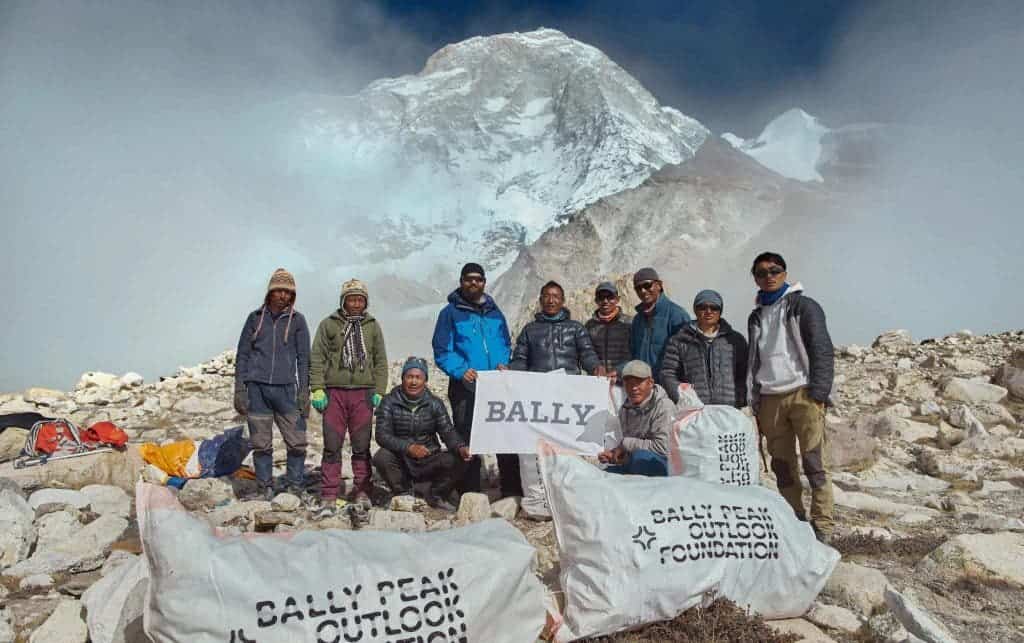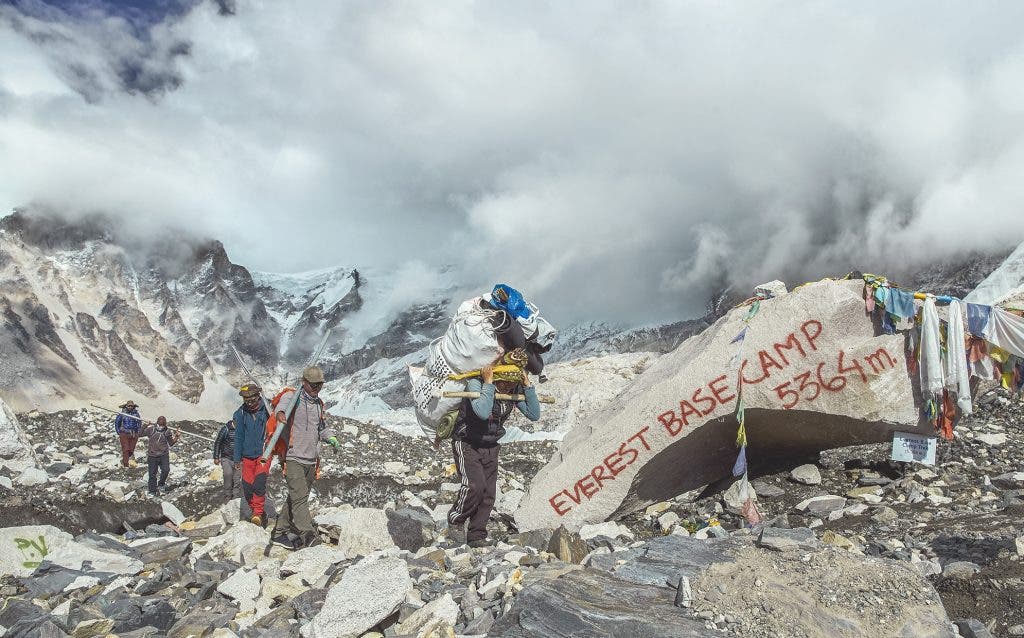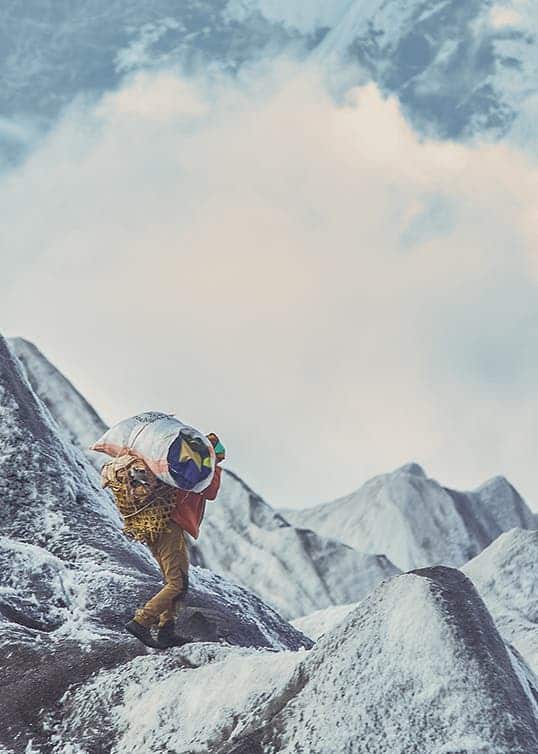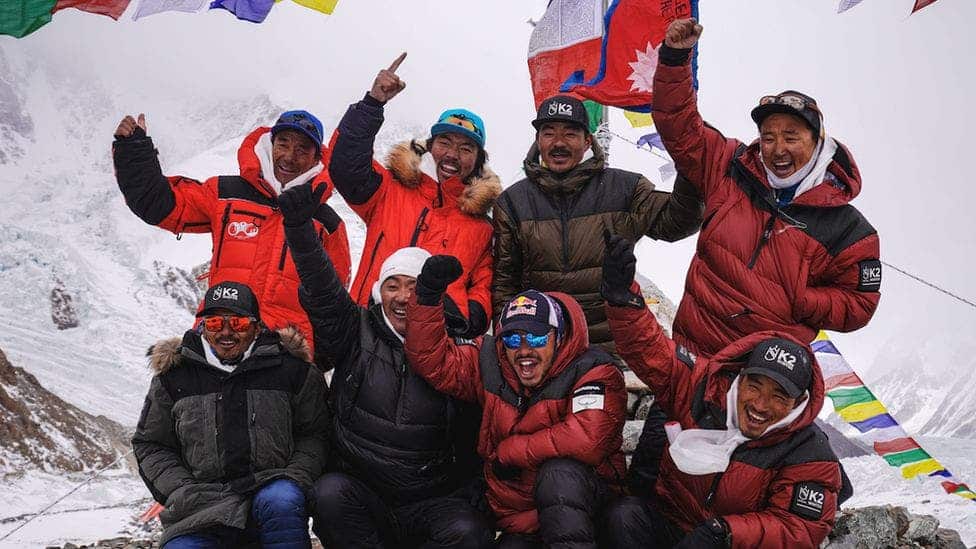
Around 800 people scale Mount Everest each year. They spend some time at the base camp and then, if everything goes according to plan, they scale the world’s tallest peak and they return home. But oftentimes, they leave a few things behind: plastic bottles, oxygen tanks, packets of food. Everest, like a few other popular destinations, has become a plastic graveyard.
Since 2019, an initiative led by Swiss luxury brand Bally has sought to clean up these mountains. Bally partnered with local Sherpas to make efforts to clean up the base camps leading to Mount Everest and other summits. In the past year, the Bally Peak Outlook Foundation traveled across the Himalayas, removing approximately 2.2 tons of garbage from Everest, Cho Oyu, Lhotse, and Makalu.
Taking advantage of the reduced number of flights and an essential stop in tourists, the team of 12 was able to work peacefully — but it wasn’t easy. Cleaning up mountains is much harder than just going to visit them and taking photos, says climber and environmental activist Dawa Steven Sherpa, who has been removing trash from the mountain since 2008.
They spent days looking for the waste, collecting it, and then carrying it to a disposal site. Garbage that’s been there for decades has been removed. It was a painstaking task that involved traveling over 450 kilometers, but it was worth it: at the end of it all, they disposed tons of garbage.

The initiative is led by Nepali climbers, ethnic Sherpas — the backbone of climbing activities around the Himalayas. Sherpas regularly organized and help foreign mountaineering expeditions, but they are often left out of the spotlight. For them, the Himalayan peaks are not just a money bag or a travel destination, they are their cultural and spiritual heritage. The Sherpa call Mount Everest Chomolungma and respect it as the “Mother of the World.” Mount Makalu is respected as the deity Shankar (Shiva). Each clan reveres certain mountain peaks and their protective deities. Garbage pollution is more than just an environmental concern, it’s an offense to the gods, Steven says.
“To the gods, it must feel like taking a thorn out of their finger,” he said, adding that Sherpa communities feel it’s their right and responsibility to protect the mountains.
The cleaning expedition also offered a way to employ a handful of people over a period where many Sherpa communities saw their income drop drastically. Last week, Nepal eased quarantine rules for visitors in an effort to attract more climbers to Mount Everest, after the pandemic devastated the local tourism industry.
“The Bally Peak Outlook Foundation project was able to provide critical income for local communities in the Himalayan region, employing professional climbers, cleaners, sorters, packers, porters, as well as dedicated support teams on the ground at each base camp who were all native to the mountain region,” a press release from the foundation said.
But there is still much work to be done.
“Restoring these sacred slopes to their natural, pristine state, the second phase of the “8x8000m” expedition will take place over the course of 2021, when teams will clean up the base camps of Kanchenjunga (8,586m), Dhaulagiri (8,167m), Manaslu (8,156m), Annapurna (8,091m), as well as Everest for a third time,” the Bally Peak Outlook Foundation website reads.

It was a good week for the local community, as on Saturday, another noteworthy event took place: Nepali climbers made history by completing the first-ever winter summit of K2. K2 is the world’s second tallest peak in the world, but a much more dangerous climb than Everest. Long-called the “savage mountain”, K2 has been inaccessible in the winter. This year alone, dozens of climbers attempted to climb it but failed, sometimes with tragic consequences.
But a group of 10 Nepalis coalesced and managed to scale the infamous summit, going down in mountaineering history and sparking joy within the local community of climbers.
“We are proud to have been a part of history for humankind and to show that collaboration, teamwork and a positive mental attitude can push limits to what we feel might be possible,” said Mountaineer Nirmal Purja.










